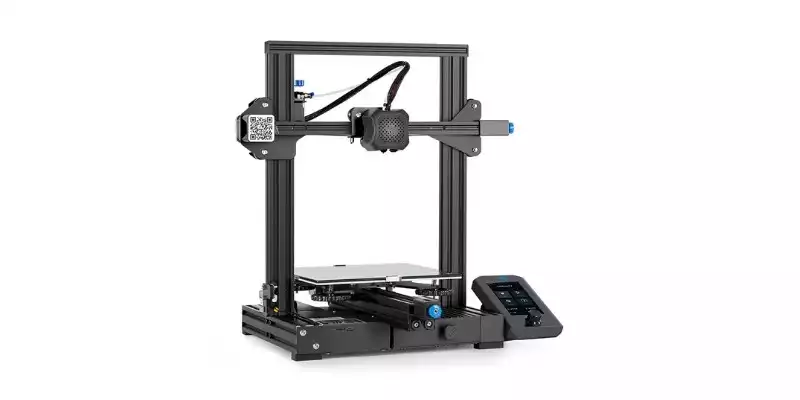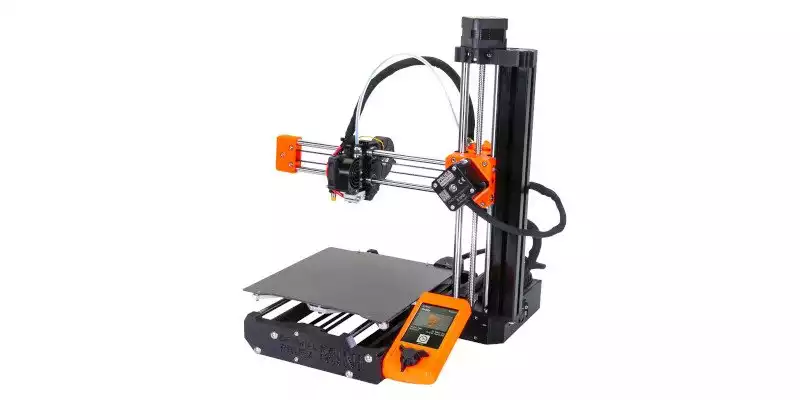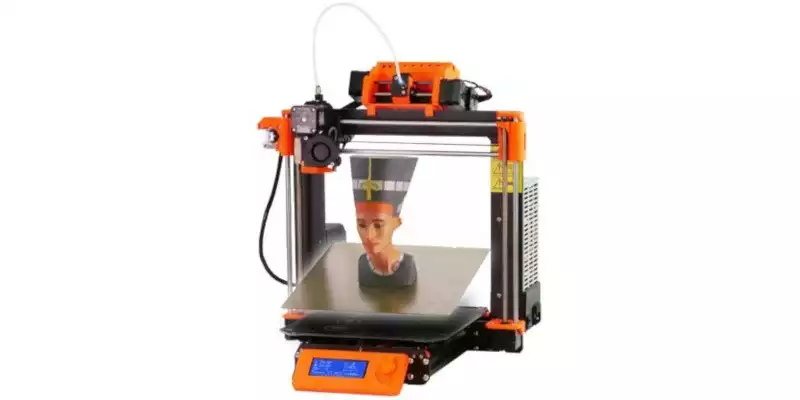Back in the early 2000s, 3D printers were elephant-sized behemoths that cost tens of thousands of dollars. Now, FDM 3D printer giants like Ultimaker and Makerbot, and low cost 3D printer manufacturers like Creality and Prusa exist — because of one sector-defining innovation. That was the RepRap 3D printer movement.
Now in 2024, we’ve recommended the best RepRap 3D printers and buildable kits for open-source printing on a budget:
|
|
|
|
|
4.3
|
4.5
|
4.7
|
|
$189
|
$399
|
$799-1099
|
|
|
| Name | Max Build Volume (mm) | Price | Where to buy for the best price? | Alternative Purchase Option |
|---|---|---|---|---|
| Prusa i3 MK3S | 250 x 210 x 200 | $749 / $999 | Kit available on Prusa store here Fully assembled on Prusa store here | Kit available on Amazon here Fully assembled on Amazon here |
| Creality Ender 3 Pro | 220 x 220 x 250 | $190 | Creality Store here | Amazon here |
| Prusa Mini | 180 x 180 x 180 | $399 | Prusa Store here | |
| Anet A8 | 220 x 220 x 240 | $159 | Amazon here | |
| Creality CR-10 / V3 | 300 x 300 x 400 | $369-499 | Amazon here | 3DJake UK & Europe |
| FLSUN QQ-S Pro | 255 x 255 x 360 | $369 | Amazon here |
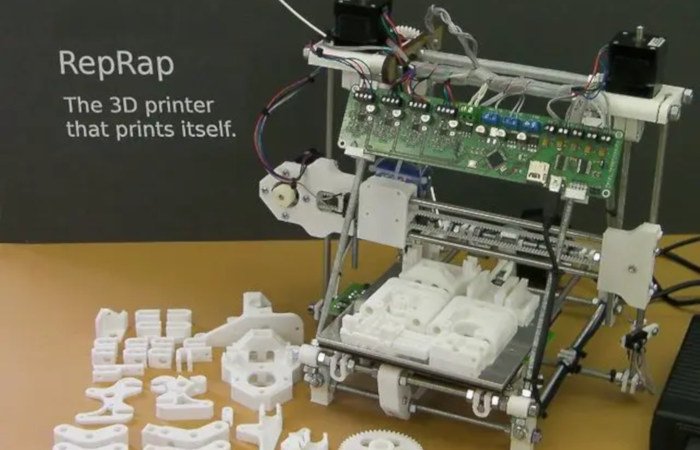
How We Picked
- Price-performance ratio: does it perform well for the price?
- Versatility: can it print many materials?
- Reliability
- Must be a RepRap printer or inspired by the RepRap movement.
The Best RepRap 3D Printers
1. Prusa i3 MK3S
- Company based: Czechia
- Price: Varies — Available on Prusa store here or Amazon here / Fully assembled — Available on Prusa store here or Amazon here
- Build volume: 250 x 210 x 200 mm
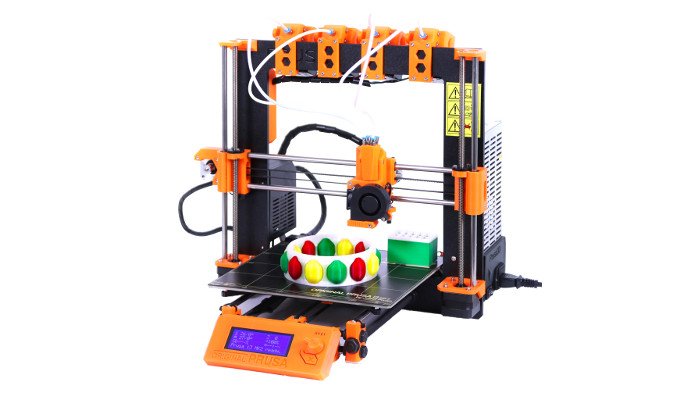
Pros
Accurate and reliable.
Comes with auto-leveling and other features to save you time and hassle.
Upgradeable with MMU kit to print 5 colors of filament at once.
Cons
Takes a long time to build if bought as a kit.
The myth. The printer. The legend. The Prusa RepRap kit is the unmistakable king of RepRap 3D printers. There’s a reason why Josef Prusa’s invention shot him into the 3D printing stratosphere and landed him a place on Forbes’ 30 under 30 list — the printer is incredible.
Sporting a 250 x 210 x 200 mm print volume as well as up to 50-micron layer resolution, the Prusa i3 is accurate and reliable. It’s designed to be simple to use, and true to the RepRap philosophy can print all its plastic components. As a result of its success, Josef Prusa has had to print over 200 more Prusa 3D printers, so this Prusa farm can print enough Prusa 3D printers to keep up with demand! Prusaception.
If you’re looking for a consistent and high-quality RepRap 3D printer or 3D printer kit, look no further. You can buy your Prusa 3D printer pre-assembled, or build your own to save a few hundred dollars. It prints with layers up to 0.05mm for great precision and surface finish, features a spring metal build plate for changeable PEI sheets, and is also a fast 3D printer, able to travel at over 200mm/s.
For business who want to print tougher filaments like Polycarbonate or Nylon, the Prusa i3 MK3S can handle that, too. The extruder heats up to 300C, and the high quality E3D V6 nozzle can handle even abrasive filaments. You can even upgrade the Prusa to print 5 different color filaments simultaneously with the $300 Multi Material Upgrade kit.
- You can purchase Prusa’s Multi Material Upgrade Kit here.
Overall, we cannot recommend it enough, and it will go down in the 3D printer hall of fame in years to come.
2. Creality Ender 3 Pro
- Price: Check price at Creality here / Available on Amazon here
- Print volume: 220 x 220 x 250 mm
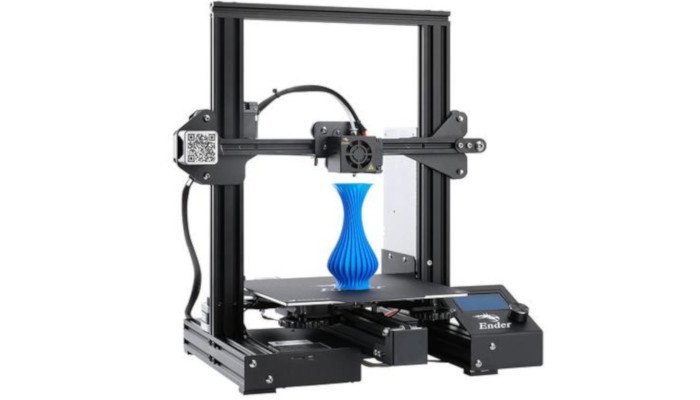
Pros
Affordable and has solid print quality.
A spruced-up version of the excellent Ender 3.
Mod and hack-friendly.
Cons
Manual bed leveling.
Requires fine-tuning to get the best results.
Creality 3D printers are known for their simplicity to assemble, and the Ender 3 Pro is a great example of that. Creality say that you can completely assemble it from package to print-ready in 10 mins using 20 screws, though for new makers this is likely to be quite optimistic.
- View the full specs in our Ender 3 review.
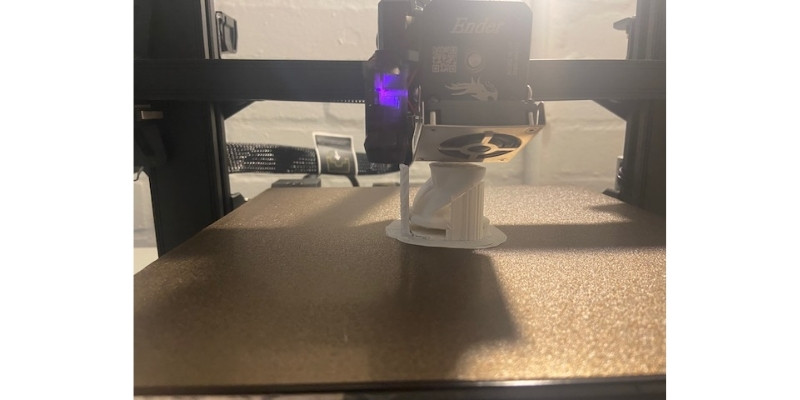
The high quality extruder reduces the chances of the Ender 3 clogging during printing, and Creality have upgraded a number of key areas in the Pro version of the Ender 3. These include an upgraded power supply, improvements to print bed leveling, and a new print bed system to prevent warping and make finished prints easier to remove.
Experienced makers know that the Ender 3 Pro is absolutely up there with the best low cost RepRap kits. It’s very accurate for the price, with precision of up to 100 microns, and it combines this with workhorse-like reliability. You get a good size print volume, fairly fast print speed (up to 180 mm/s), and it’s also fairly quiet. You get very good quality prints and reliability for a 3D printer under $300, and we highly recommend it to anyone willing to invest the time to master it.
3. Prusa Mini
- Price: $399 — Available on Prusa Store here
- Company based: Czech Republic
- Build volume: 180 x 180 x 180 mm
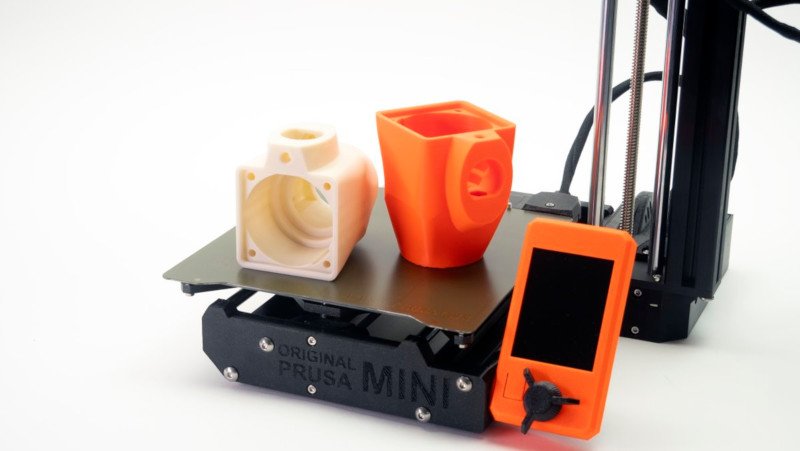
Pros
Reliable and durable, like all Prusa printers.
Fast 200mm/s print speeds.
Cons
Small print area of just 180 x 180 x 180 mm.
For those who want most of the Prusa MK3S’s main benefits, but in a more compact package and for cheaper, the Prusa Mini could be perfect for you. With a smaller 180 x 180 x 180 mm build area, it’s a smaller printer that can fit on most desktops, but it can still calibrate itself, and offers the same 0.05mm precision for great quality prints.
Whereas the MK3S comes with a filament sensor, for the Mini this is an optional upgrade. Moreover, with slightly lower extruder temperatures, you can’t print tougher filaments like Polycarbonate on the Mini, but you can still print filaments like PETG, PLA, ABS, ASA and flexible filaments.
The Mini comes with Prusa’s own PrusaSlicer 3D slicer, and if you run into any problems, you can speak with Prusa’s support team 24/7. Overall, it’s a great lower-cost RepRap 3D printer for great quality, reliable prints at a lower price.
4. Anet A8
- Price: Check price at Amazon here
- Print volume: 220 x 220 x 240 mm
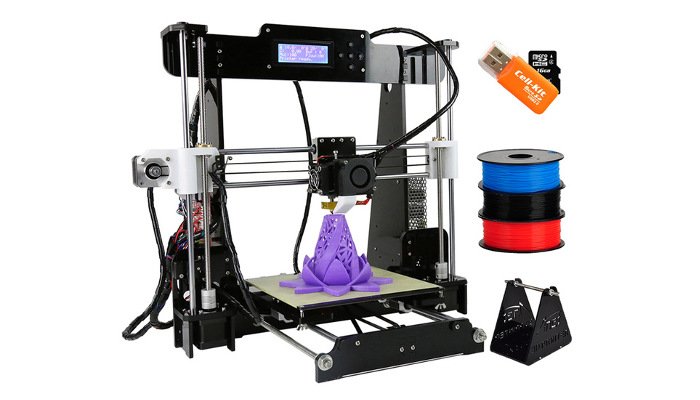
Pros
Versatile allowing to process of multiple filaments.
Reliable and accurate.
Fairly large.
Cons
Requires a skilled operator.
Will take a few hours to build as it comes as a kit.
We feel the Anet A8 counts as a RepRap 3D printer since it is Anet’s spin on the Prusa, one of the most famous RepRap kits. It’s cheap and cheerful — you get what you pay for with this DIY 3D printer kit, with extra marks for its consistency and versatility. It’s versatile as it can print so many 3D printer filaments: PLA, ABS, PVA, Nylon, PP, wood and more.
For under $200 you can’t expect peak performance, though the minimum layer height of 0.1mm is fine for most printing. Despite not having a weighed down aluminium frame or a dual extruder, the Anet A8 is fairly precise. The stainless steel rail rods, gears and bearings make the printing process more steady, though stability will be slightly worse than if the structure was made of metal.
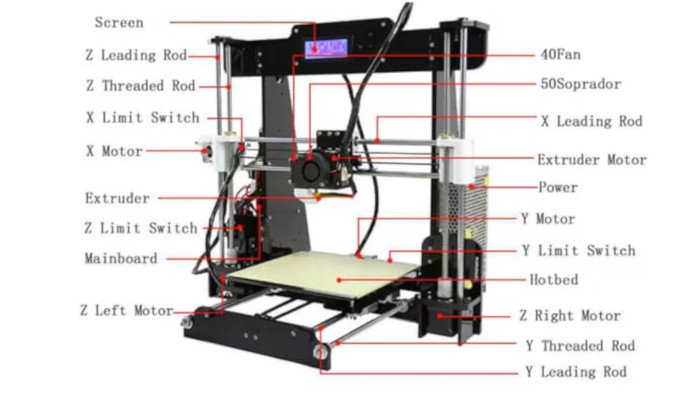
The Anet A8 does not come assembled; you’ll need to build it yourself following Anet’s step-by-step instructions. Most find this more rewarding than buying a plug & play 3D printer, and it’s a great way to learn more about how they function. You can print with your Anet A8 using 3D slicers including Cura and Repetier-Host, and transfer your 3D printer models over via SD card.
Despite the cheap price, the Anet A8 comes with a few neat features. It comes with a heated bed, meaning it can print ABS and PETG, rather than just PLA. It’s also got quite a large printing volume: 220 x 220 x 240 mm. Overall, if you’re looking for a RepRap 3D printer which doesn’t break the bank and gets you started in 3D printing, the Anet A8 is a great option at just $200.
5. Creality CR-10 / CR-10 V3
- Price: Check price at Amazon here
- Build volume: 300 x 300 x 400 mm
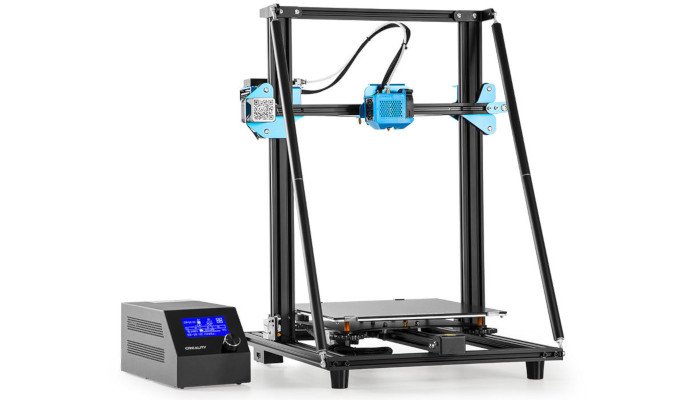
Pros
Massive build volume.
Reliable print quality.
Affordable.
Cons
Manual bed leveling.
Slow-heating bed.
Creality are known for releasing some of the most highly rated and reliable low cost RepRap 3D printer kits in recent years, with multiple iterations of the popular CR-10 available. We’ve picked both the original CR-10 and the V3, so you can choose between the upgraded but more expensive version, or the lower cost and classic original.
Though a RepRap kit at heart, the CR-10 can be assembled in under an hour without much DIY skill, making it a good 3D printer for beginners.
Not only is it reliable, but for the price it can print huge models, at up to 300 x 300 x 400 mm. It truly is a large 3D printer. In addition, the ability to print with a minimum layer thickness of just 0.05mm is very precise for a RepRap 3D printer kit for $500.
Complementing this printing precision is the stronger and heavier frame supported by triangular z-axis beams that feature on the CR-10 V3 — but not on the standard CR-10. The frame shape has changed to a more triangular shape — more similar looking to the original RepRap Mendel! — in order improve print stability and reduce the Z axis wobble, key to improving print quality.
The CR-10 also has a filament breakage detector that pauses if it detects any issues without ruining your print, and can automatically resume printing in the event of a power outage. These are key features that you really don’t appreciate until disaster strikes 49 hours into a 50 hour print and they save you — but are an absolute life-saver. Overall, we highly recommend the Creality CR-10 V2.
All the Creality CR-10 source files are available here.
6. FLSUN QQ-S Delta — Upgrade on the RepRap Kossel
- Price: Check latest price at Amazon here
- Build volume: 255 x 255 x 360 mm
- We have also tested and reviewed the FLSUN QQ-S, which you can view if you click our FLSUN QQ-S review.
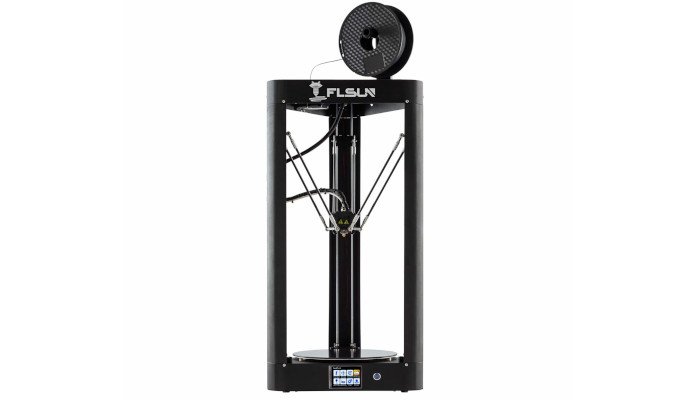
Pros
Easy to set up as it comes 90% assembled.
Good build volume for the price.
Comes with a lattice glass print bed, allowing for faster heating, better adhesion, and less warping.
Cons
Open build chamber, which can be dangerous for children to be around.
There are a number of great RepRap Kossel 3D printers, including the FLSUN QQ-S that we were very impressed with in our 3D printer review. The FLSUN QQ-S is a delta 3D printer that you can buy almost fully pre-assembled, saving you time.
Delta 3D printers are typically tall and thin, with the FLSUN QQ-S able to print up to 360 mm tall prints, with an XY axis of 255 mm.
The assembly process is easy, and it took me under 30 minutes. I took some pictures of the assmebly process you can see below:
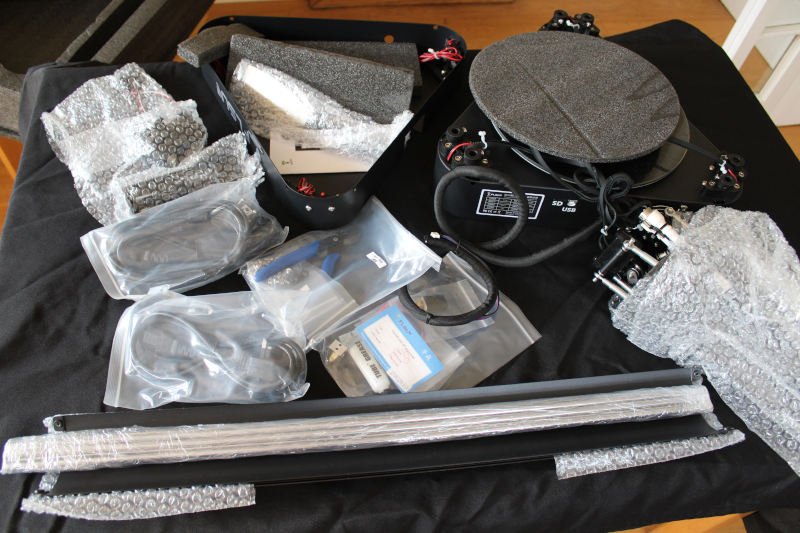

Kossel RepRap machines were thought of as tougher to master 3D printers for more experienced makers. Now with the FLSUN QQ-S the learning curve is far reduced, especially since the RepRap upgrade ships to you almost completely assembled. The 3.2-inch touchscreen is very easy to use, and the printer comes with an SD card with the 3D slicer software on it, though you can also connect to the printer via WiFi.
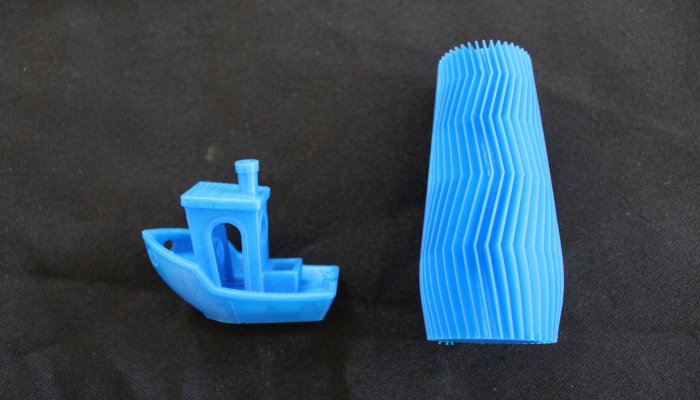
Another main selling point is that it’s noticeably (or perhaps unnoticeably!) quiet — FLSUN claim it prints at under 50 dB. This, coupled with the fans and cooling system to avoid overheating and reduce any bad smells, makes the FLSUN QQ-S a great RepRap printer for your home. It retains the quick printing, around 30% faster than the average printer, so if time is of the essence, you could do worse than go with the FLSUN QQ-S.
It’s accurate, quiet, fast and doesn’t take up too much space on a desktop. I personally recommend it highly, though if you have more money, you may want to upgrade to the Flsun Super Racer, or Flsun V400, as they are newer and more powerful delta models.
The only drawback is that it may not seem as truly RepRap as it comes more or less pre-assembled, but it evolved from the original RepRap Kossel design so we feel it is worthy of inclusion.
BONUS — RepRap Mendel — Legendary RepRap 3D Printer
Pros
A true veteran of the game.
Fairly large print volume at 200 x 200 x 140 mm.
Cons
Its performance is now outdated.
The first RepRap 3D printer on this list chosen because of its legacy rather than present performance, the RepRap Mendel is a true veteran of the game. The second iteration of the RepRap machines, the Mendel was the successor to the Darwin machine. It was designed and created by Ed Sells, a student of Dr Adrian Bowyer.
Named after Gregor Mendel, the ‘father of genetics’, this RepRap 3D printer weighs around 7kg and can print a fairly large 200 x 200 x 140 mm. Though it has a number of improvements over the Darwin, the sheer nostalgia and impact the Darwin has had since its introduction over a decade ago puts it above the Mendel for us.
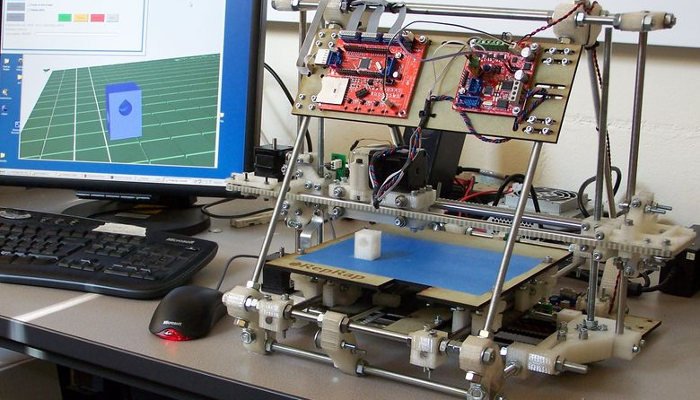
What is a RepRap 3D Printer? And What Does RepRap Mean?
RepRap is short for “replicating rapid prototyper” — aka a self-replicating 3D printer.
A RepRap 3D printer is one designed in line with the RepRap ethos: 3D printers that can self-replicate and print parts to make more RepRap 3D printers. These new RepRap printers can then print more RepRap printers, and so on.
The RepRap movement has done more to democratize 3D printing than anything else. RepRap 3D printers preempted the first DIY 3D printer kits, with these open source 3D printers encouraging tinkering and innovation, advancing the technology.
History of the RepRap movement and RepRap 3D Printing
The RepRap movement was founded by Dr Adrian Bowyer, then a Senior Lecturer at the University of Bath, during 2004 and 2005. He was awarded an MBE by Queen Elizabeth II in 2019 for his services to 3D printing.
The first RepRap 3D printer invented by Dr Bowyer was the RepRap Dawin, named after Charles Darwin who first theorized evolution. You could build one for a few hundred dollars if you got the plastic parts printed and then bought the electronics.
These were the first ever low cost 3D printers; DIY 3D printers you could build yourself. What was previously inaccessible became possible for anyone to have at home if you had enough tech know-how.
And if you were given the plastic parts 3D printed by a friend or someone else, you were morally obliged to print more plastic parts for anyone else who wanted a RepRap. That way, the RepRap movement could spread exponentially, with more printers in service to help others make their own 3D printers.
The first RepRap 3D printer — RepRap Darwin
It was basic, it looked like it was from the 80s, but it worked. It worked for $200 while other 3D printers costed $10,000+. This spurred on the open source 3D printing revolution that has led us to the cutting-edge FDM 3D printers we have today.
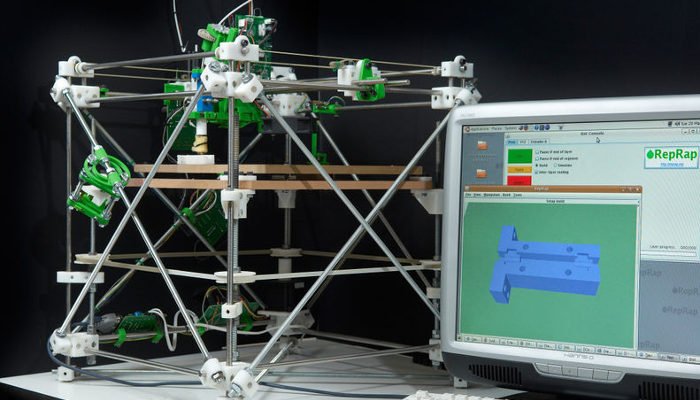
The Darwin plays an important part in the history of 3D printing, and allowed people to now 3D print from home provided they had the technological know-how. It wasn’t pretty and it doesn’t hold up against the far superior RepRap 3D printers that are about today, but in 2008 the Darwin was a big deal, and is looked back upon fondly today.
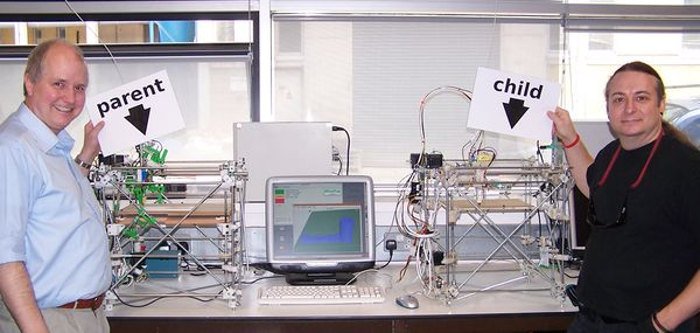
If you’re interested in finding out more about the history of 3D printing, click here.
For more RepRap-related information and further reading:
Our interview with Dr Adrian Bowyer, discussing founding the RepRap movement
Our long-form feature story on the entire history of 3D printing
Our ranking of the best DIY 3D printer kits

